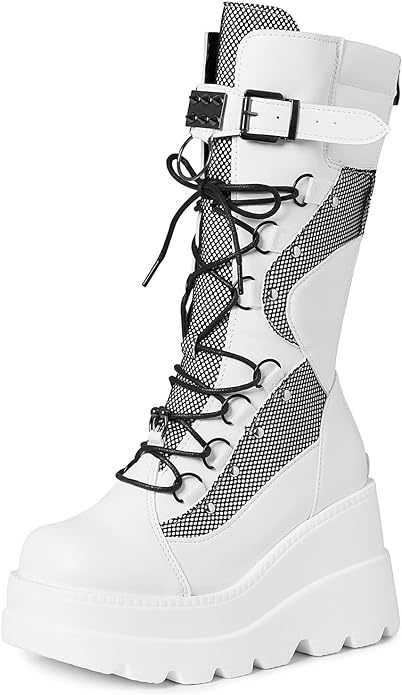#Neuroplasticity and Learning
Explore tagged Tumblr posts
Text
Brainoware: The Hybrid Neuromorphic System for a Brighter Tomorrow
A glimpse into the double-edged nature of Brain Organoid Reservoir Computing, with the pros/cons of this biological computing approach From a young age, I was captivated by the mysteries of science and the promise of technology, wondering how they could shape our understanding of the world. I was fortunate to receive STEM education early on in a specialized school, where my creativity and…
#Artificial Intelligence (AI) in Healthcare#Biocomputing and Drug Testing#Biocomputing Applications#Biodigital Transformation#Biological Computing#Brain Organoid Reservoir Computing (BORC)#Brain-Machine Interfaces#Brainoware Research#Brainoware: The Hybrid Neuromorphic System#Cognitive Science Advances#Ethics in Biotechnology#Future of Drug Testing#Healthcare Transformation#Hybrid Neuromorphic Systems#Literature Reviews by Dr Mehmet Yildiz#Medicine 3.0#Mental Health and Behavioral Science#Neurocomputing and Neurobiology Advances#NeuroHIV and cognitive decline#neuroinflammation#Neurological Disorder Research#Neuroplasticity and Learning#neurorehabilitation#Neuroscience Innovations#Organoid Intelligence#Understanding neural circuitry
1 note
·
View note
Text
The Paradox of Control — Surrender, Acceptance, and True Agency - Post 5 of 5
The pursuit of control is a fundamental aspect of the human condition—an enduring impulse that finds its expression in nearly every facet of existence. Photo by JESHOOTS.com on Pexels.com From mastering physical environments to orchestrating societal structures, humanity’s narrative has been a perpetual endeavour to impose order upon chaos. This relentless striving is enshrined in political…

View On WordPress
#acceptance#ACT therapy#agency#Arendt#bioethics#Buddhism#collective agency#Confucianism#control#Degrowth#ecological ethics#Ecology#Foucault#Gandhi#indigenous traditions#learned helplessness#meditation#mindfulness#Neuroplasticity#non-attachment#palliative care#phenomenology#Political Theory#Raffaello Palandri#Stoicism#surrender#Sustainability#Taoism#transpersonal psychology#Wu Wei
2 notes
·
View notes
Text
youtube
#Want to learn faster and improve your memory? In this video#we reveal 6 neuroscience-backed secrets that will help you boost your brainpower and accelerate your learning. These proven techniques are#whether you're studying for exams#advancing your career#or learning a new skill.#Discover the latest brain hacks to optimize your learning process#improve focus#and increase retention. Perfect for students#professionals#and anyone looking to master new information quickly.#Watch now and start applying these brain-boosting strategies today!#Timestamps:#0:00 Introduction#1:23 Brain Hack 1: Active Recall#3:45 Brain Hack 2: Spaced Repetition#5:20 Brain Hack 3: Visualization#7:00 Brain Hack 4: Chunking Information#9:10 Brain Hack 5: Interleaving Practice#11:05 Brain Hack 6: Sleep & Memory Consolidation#Tags:#BrainHacks#Neuroscience#LearnFaster#MemoryTips#StudyHacks#CognitiveImprovement#LearningStrategies#BoostYourBrain#Neuroplasticity#SelfDevelopment
2 notes
·
View notes
Text
@itsme-imtherealone
It’s sad how much of what is taught in school is useless to over 99% of the population.
There are literally math concepts taught in high school and middle school that are only used in extremely specialized fields or that are even so outdated they aren’t used anymore!
#sorry for tagging#yeah nerd shit whatever#but I think neuroplasticity is so important#in the same way I think non artists taking art classes is important#no matter what job you want the most important thing to learn from school is how to think#reason critical thinking discipline#anyway I actually really like school but I’m built different
268K notes
·
View notes
Text
school environments shaping the developing brain
ok this is very random, ignore the possible errors I make typing this out but just some random thoughts I had awhile back had resurfaced recently, I was working on my science fair project: The correlation between stress/cortisol and how it affects the developing brain. And it got me thinking.
There's a brain process called synaptic pruning, where unused neural connections are eliminated, which enhances neural network efficiency, this process is especially active from early childhood through adolescence. The brain basically strengthens connections that are used often and removes those that barely engage.
Thing is, school significantly influences which neural pathways are kept and which are purged, environments that encourage critical thinking, diverse experiences, etc. promote the retention of a wide range of neural connections. However, rigid education systems that place importance on rote memorization and discourage creativity could likely limit the amount of diverse experiences needed for healthy neural development.
The patterns instilled during adolescence has long-lasting effects, neural pathways that are kept during this period places a huge importance in behaviors and thought patterns that the individual has as an adult. So, educational systems that don't promote diverse experiences may not only limit immediate learning outcomes but could also shape how well an individual preforms cognitively but also how competent their social capabilities will be.
so all in all, how stupid somebody is could probably also be blamed on the education system of their country/city.
sources:
#science#neuroscience#developmental neurobiology#pedagogy#education#sociology#neuroplasticity#thoughts#adolescent brain#brain development#education system#curriculum reform#school reform#social control#conformity#teen development#education and identity#learning#the brain#brain#educational psychology#child development#brain science
0 notes
Text
Juggling

Juggling is the physical skill of manipulating objects for recreation, entertainment, art, or sport. The most recognizable form of juggling is toss juggling, where objects are thrown and caught repeatedly, often in rhythmic patterns. However, juggling encompasses a wide range of disciplines beyond toss juggling, including contact juggling, bounce juggling, diabolo, devil sticks, cigar boxes, and more. It is practiced both casually and professionally, as a component of circus arts, street performance, and competitive disciplines. Juggling has deep historical roots and has evolved to encompass complex mathematical theories, physiological implications, and cultural significances.

The term “juggling” originates from the Middle English jogelen, meaning "to entertain by performing tricks," itself derived from the Old French jogler and Latin ioculāri, meaning “to jest or joke.” Today, juggling typically refers to the intentional manipulation of objects in patterns or sequences, especially with the hands and through the air.
The classic definition involves at least three objects, since two can be alternated with one object in each hand, not requiring the object to be airborne at any time. The minimum number of objects for true juggling is thus traditionally considered three, although two-object juggling can be complex and demanding depending on the technique used (e.g., one-handed juggling, contact juggling).

Juggling is one of the oldest forms of art and entertainment, with evidence dating back over 4,000 years. Ancient Egyptian tombs, such as that of an unknown prince from the Beni Hasan necropolis (circa 1994–1781 BCE), depict women juggling balls. References also exist in ancient Chinese, Indian, Greek, and Roman cultures. The Chinese historical text Liezi, dating to the 3rd century BCE, describes a warrior who could keep multiple weapons in motion while performing martial arts. In Rome, jugglers known as pilarii were employed to entertain at banquets and celebrations.
During the medieval period in Europe, jugglers were associated with traveling entertainers, often performing alongside musicians and acrobats. They were sometimes mistrusted or marginalized by society. The art began to evolve into a more respected profession with the development of the modern circus in the 18th and 19th centuries, where juggling became a staple act.
In the 20th century, juggling underwent formalization and expansion. Organizations such as the International Jugglers' Association (IJA), founded in 1947, and the World Juggling Federation (WJF), founded in 2000, helped standardize competition formats and encourage innovation and excellence in technique.

Types of Juggling:
1. Toss Juggling:
This is the most widely recognized form. Objects are thrown into the air and caught in a repeating pattern. The three-ball cascade is the foundational pattern for toss juggling and is often the first learned. Other toss patterns include the reverse cascade, shower, columns, and multiplexes. Toss juggling can involve balls, clubs, rings, torches, knives, and other throwable items. Advanced patterns include Mills Mess, Rubenstein's Revenge, and body throws.
2. Contact Juggling:
Unlike toss juggling, contact juggling involves the manipulation of one or more objects that remain in constant contact with the body. Made popular by Michael Moschen in the 1980s, it includes rolling balls along the hands, arms, and body in smooth, flowing motions. The “crystal ball” style aims to create the illusion that the ball is floating or motionless in space.
3. Bounce Juggling:
Here, balls are bounced off the ground rather than tossed into the air. Bounce juggling can be either synchronous or asynchronous and is affected by the elasticity of the ball and the surface. It allows unique visual effects and different timing patterns from traditional toss juggling.
4. Club Juggling and Passing:
Clubs are asymmetrical objects that rotate during flight. Club juggling is often considered more challenging than ball juggling due to the need to control spin and handle orientation. Passing involves two or more jugglers exchanging clubs in patterns, demanding coordination and rhythm.
5. Ring Juggling:
Rings are flatter, larger objects that allow for a different visual effect and can be spun on fingers or around limbs. Rings can be tossed in patterns similar to balls and can be passed, stacked, or manipulated on the body.
6. Combination and Prop-Based Forms:
Jugglers may integrate diabolo (a double-coned object manipulated with string), devil sticks, cigar boxes, spinning plates, and yo-yos. These forms often cross into object manipulation and performance art.

Juggling patterns are systematically described using mathematical notation systems. The most prominent is siteswap, a numerical notation representing the order and timing of throws. In this system, a 3 represents a basic three-ball cascade, 441 represents a pattern involving different throw heights, and so on. Siteswap allows for the categorization and creation of new patterns and has been extended to synchronous (both hands throw at the same time) and multiplex (multiple objects thrown from one hand) variants.
Another system is state diagrams, which model the movement of objects and hands through different states, useful in programming juggling robots or teaching complex sequences. Juggling patterns can also be represented using ladder diagrams and animation software for educational purposes.

Juggling is an activity that requires fine motor coordination, hand-eye synchronization, spatial awareness, and rhythm. From a physiological perspective, juggling involves both gross and fine motor skills and is processed by multiple areas of the brain, including the visual cortex, motor cortex, and cerebellum.
Numerous studies have shown that learning to juggle can induce structural changes in the brain. A widely cited study by Draganski et al. (2004) found that adults who learned to juggle over three months showed increases in gray matter in areas associated with visual motion processing. While the increases partially reversed after training ceased, the study provided evidence for neuroplasticity in response to coordinated physical skill acquisition.
From a motor learning perspective, juggling represents a dynamic balance between predictive modeling (estimating where objects will be) and reactive control (responding to variations). It requires rhythm, timing, and attention distribution, often described as being in a “flow state.”

Juggling has been linked to improvements in cognitive functions such as concentration, reaction time, and working memory. Because it demands bilateral coordination and constant feedback, it is sometimes used in therapeutic settings for motor rehabilitation and cognitive development.
Learning to juggle is an exercise in incremental mastery, reinforcing patience, perseverance, and adaptive learning. The practice is often used in educational and corporate team-building contexts to promote focus and mindfulness.

Juggling intersects significantly with mathematics, particularly combinatorics and group theory. Siteswap notation is rooted in modular arithmetic, where throw values correspond to how many beats into the future a ball will land. Valid siteswap sequences must satisfy the constraint that no two throws land simultaneously in the same hand (in vanilla, one-ball-per-hand patterns).
Higher-order mathematical studies of juggling involve graph theory (modeling state transitions), permutation groups (orderings of throws and catches), and even knot theory, where juggling paths can be modeled as braids or tangles in three-dimensional space. Juggling robots, programmed using this mathematics, have been built to demonstrate the feasibility of automated object manipulation.

Juggling has appeared in numerous cultural contexts, including folk festivals, religious ceremonies, and royal courts. In some African traditions, jugglers use indigenous props like calabashes, and in Japan, Edo-period street performers included jugglers using fans and umbrellas. The symbolism of juggling varies across cultures, sometimes seen as a metaphor for balance, harmony, or the cyclical nature of life.
In contemporary settings, juggling is a key component of circus performance, stage shows, and busking. Modern jugglers like Anthony Gatto, regarded as one of the greatest technical jugglers in history, have brought athleticism and precision to mainstream audiences. Performance jugglers often incorporate comedy, dance, storytelling, and theater into their routines.

Modern juggling competitions test speed, complexity, endurance, and innovation. The World Juggling Federation focuses on sport juggling, emphasizing precision, difficulty, and athletic ability, often with strict criteria and scoring. The International Jugglers' Association, in contrast, encompasses both sport and performance styles, hosting festivals and fostering community.
Other events include the European Juggling Convention (EJC), the largest of its kind, attracting thousands annually, and the IJA Festival, which includes workshops, games, and championships. These gatherings play a vital role in sharing knowledge, evolving techniques, and promoting the cultural importance of juggling.
Technology has expanded the scope of juggling through motion tracking, virtual juggling simulations, and robotic jugglers. Machine learning algorithms have been used to teach robots to juggle balls, analyze patterns, and even invent new sequences.
Augmented reality systems now allow virtual juggling training, giving real-time feedback on throw arcs and timing. Wearable sensors provide biomechanical feedback for elite training. Such innovations suggest that juggling will continue evolving as both an art and a science.
Juggling is a rich and multifaceted practice that spans the domains of art, science, sport, and education. With ancient origins and modern advancements, it continues to inspire innovation, challenge human capability, and delight audiences worldwide. From mathematical modeling and neurological impact to cultural significance and performance art, juggling exemplifies the harmony between creativity and precision in human expression.
#juggling#circus arts#object manipulation#juggler#contact juggling#circus life#flow arts#performance art#juggling aesthetic#juggling community#alt circus#modern circus#street performance#busker life#circus performer#circus fashion#juggling love#learn juggling#jugglers of instagram#subculture#artist profile#neuroplasticity#juggling math#juggling history#circus photography#alt performance#indie circus#skill based art#hand eye coordination#tumblr readers
0 notes
Text
How I discovered that every good sports coach must be a psychological genius
My evenings a few years ago consisted of being the most wonderful, kind, amazing, dedicated older sister ever (I used to take my brother to his table tennis lessons, sit there for two hours while he played, and take him back home, never forgetting to stop by to sneak a quick snack without letting our parents know). But because I would sit in the court and observe how the coach went about coaching the kids, I noticed a certain strategy he would follow to get the kids to do better.
He would begin with teaching the kids the basics, needed to even begin thinking about table tennis – where to place your thumb and fingers while holding the racket and at what distance from the table to stand. Then he would move on correcting their posture – at what approximate angle to bend your knees, how to keep your elbows, how to bend your torso forward, and so on. Next, he would ask teach them the basic movements – at what angle to hit the ball as you serve, how to outstretch your arm, how to move your wrist when you have to take a backhand shot, how to move back and forth and to the sides depending on how the ball arrives to you, and so on. When a kid would perfect these, he would work on bettering their ability to handle a speedy serve and also to hit fast.
Very interestingly, at the beginning of each of these sections of training, he would be very encouraging, letting the players make quite a lot of mistakes, and would reward them with a public compliment or exemption from ball collection duty for each time they would get something just right. However, as time went by, and they became better at one particular section, he would stop rewarding them for it. Now, the rewards only come if you get the next, more advanced thing, right. So on and so forth went the training till all the kids became quite skilled. Seems pretty standard of a sports coaching strategy right? Of Course you don’t begin with expecting a novice to pick up advanced skills, you gradually increase the expectation in terms of difficulty to be handled.
But, I have only now realised the psychological mechanism that is behind a training strategy such as this. In reinforcement learning, something called ‘shaping’ is utilised to get the subjects to learn complex behaviours (such as, you know, playing a sport). Usually, the reinforcement learning paradigm involves a skinner box in which an animal is left to accidentally discover what behaviour will get them a reward (or save them from punishment). A simple behaviour such as a lever press or pecking is what’s desired and then reinforced/punished. But what about when the learning of a complex behaviour is desired? It is unreasonable to expect an accidental approach to be able to lead to the learning of complex behaviours, so, the desired behaviour is broken down into smaller components, and each ‘successive approximation’ is rewarded instead. Also, it is important to withhold reinforcement for an approximation stage behaviour that has been acquired. This intuitively makes sense because if one keeps reinforcing a behaviour, there will be no motivation to improve or make progress towards the next, more complex approximation. Gradually, brick (approximation) by brick (approximation), the complex behaviour is learnt, and hopefully my brother is on his way to being a table tennis champ!
#neuroscience#cognitive science#learning#cognition#neuroplasticity#reinforcement#skinner#shaping#reinforcement learning
0 notes
Text
eta

#misc tag#yes. it's like after you break a bone#while you're healing and not using the muscles they will atrophy#if you want to rebuild that strength you have to start using that metaphorical muscle again#being smart is not a fixed state. it's a skill that you can improve upon just like any other#eta: it's important to note that while there are certain important developmental milestones for cognitive development#the human brain never really stops growing or changing#iirc there's a point around sixty where it seems to taper off and become more difficult to learn new things#but it does not become impossible nor does the brain cease to posses it's neuroplasticity#gets off my soap box
58K notes
·
View notes
Text
0 notes
Video
youtube
Understanding Neuroplasticity The Brain's Adaptability #neuroplasticity ...
0 notes
Text
GLOW UP GUIDE FOR 2025⠀

READ: On average, it takes more than 2 months before a new behavior becomes automatic — 66 days to be exact. And considering that 2025 is precisely these many days away, why not start with our glow up plan already?

Physical Glow Up-
BODY
— 5-10K steps a day.
— 7-8 hours of sleep.
— workout everyday for 1 hr atleast- yoga/stretching/pilates/cardio/lifting weights. a workout may take one hour, but your mood will be boosted for the next 12 hours.
— posture training.
— sunlight exposure after waking up for at least 10 minutes.
NUTRITION
— 2-3 liters of water every day.
— limit your caffeine intake.
— avoid sugars as much as you can.
— high protein diet, pre and probiotics.
— more fruits and veggies (+ green smoothies if you like).
— no junk/processed food/trans fat.
— no eating after 8 pm.
SKINCARE
— be clear on your skin type (oily, dry, combination, sensitive).
— once you're clear, use these accordingly- cleanser, toner, targeted serum, eye cream, moisturizer, sunscreen (≥50 spf).
— keep your bedding clean as well.
— no picking of skin on your lips, cuticle etc.
— gua sha to help improve blood circulation and lessen toxins.
— cold therapy may take three to five minutes of being uncomfortable, but your energy levels will be boosted for the rest of the day.
— remove makeup before you go to bed.
BODY CARE
— shower every day.
— exfoliate 2x a week.
— use body lotion (shea butter/aloe vera gel/coconut oil).
HAIR CARE
— wash hair 2-3x a week
— oil your scalp 2x a week, at least 3 hours before shampoo.
— hair mask 1x per week.
— never brush wet hair.
— use silk pillow case.
HYGIENE
— brush your teeth 2x a day, clean tongue and the roof of the mouth daily.
— floss daily.
— cut your nails 1x a week, never remove the cuticles.
— glycolic acid under arm for odor and discoloration.
— never use soap on your coochie.

Mental Glow Up-
MINDSET
— set clear goals- define and breakdown your aspirations.
— start your mornings with positive affirmations.
— surround yourself with uplifting content and people.
— be shamelessly selfish to your career and mental health, remove anyone or anything that doesn't align with your priorities and wellbeing.
— boost your brain health by these 4 neuroscience tools:
difficult first: start your day with the most difficult task (cortisol and dopamine are high in the body meaning that your body/mind is primed to work).
rest your eyes: introduce a micro-pause after learning by resting/closing your eyes - will help retain information better.
tomorrow's worries: write tomorrow's to-do list before bed as it is proven to be effective in helping you fall asleep.
find time to play: engage in low-stake play. can be anything you find fun but where the outcome doesn't matter (induces neuroplasticity + reduces stress).
MIND
— meditation might take as low as ten minutes, but your focus will be improved for the rest of the day.
— no social media after waking up and at least an hour before bed.
— keep aside 1 hr of time to read daily! reading a new book may take five hours, but you will keep the knowledge forever.
— journaling, gratitude.
— digital detox once a week or for 12 hours.
— limit unnecessary screentime, unfollow or cut off people you don't want to see.
JOURNALING
— choose a regular time each day to journal, making it a part of your routine.
— find a quiet, comfortable place free from distractions. light a candle if you want.
— allow your thoughts to flow without censoring or editing.
— write about your feelings and emotions to understand them better. write about things you are thankful for to boost your mood. write about your short-term and long-term goals. identify what triggers certain emotions or reactions
— set a timer for 5-10 minutes and write continuously during that time.
— reflect on both positive experiences and challenges.
— make lists, journal your thoughts on these questions.
— journal at night to clear your mind before bedtime, because emotions and thoughts lose their power once we acknowledge them.
— a gratitude practice may take five minutes, but your mindset will be shifted for the rest of the day.
AFFIRMATIONS
— customise affirmations to your needs.

Personal Life-
WEEKLY TASKS
— initiate small changes: begin with small, manageable tasks such as making your bed or cleaning your room every sunday.
— celebrate your success: reward yourself when you achieve your goals or have a consistently productive week. consider treats like buying flowers for yourself or watching your favorite show.
DAILY WORK
— set achievable goals: establish realistic goals for the day, week, or month ahead.
— track your progress.
— organise your work space, declutter your shelves etc.
— embrace the power of lists: keep a list of tasks to be done and their deadlines. this way, you start each day with a clear plan. to make it visually appealing and motivating, consider using productivity apps like evernote, habit tracker, or notion.
PRODUCTIVITY TIPS
— wake up early.
— plan ahead everything, do scheduling. you can use:
google calendar / notion / tasks .
— if the task takes less than 2 minutes to finish, do it immediately.
— countdown rule, if you are procrastinating, count 1-2-3-4-5 and jump.
— start slow, don't rush and try to do everything at one time.
— follow a proper routine, use app locks based on screentime.
— pomodoro technique, 25 min work, and 5 min break.
— schedule longer break times as well e.g 30 min nap.

#studyblr#mental health#self improvement#studyspo#psychology#self esteem#college#self love#self care#self worth#self help#self awareness#student#study#personal development#personal growth#philosophy#self confidence#university#spirituality#medblr#it girl#becoming her#becoming that girl#glow up#healing#therapy#study motivation#quotes#spiritualgrowth
10K notes
·
View notes
Text
"The neurons that fire together, wire together" - from my counselor
You learned to self hate based on other's constant criticisms or attacks of some nature. Or, being taught by a fellow self loather who didn't know better(that's pretty common too)
If you don't want to go down that road as much, you gotta train. Remove the easier triggers from your vicinity.
Then, add counteractive activities. (Itll feel unnatural until one day it doesn't... like paving a dirt road vs going down an old superhighway)
You will stumble. You will recover if you keep the mission in mind.
It does take years of work.
Its absolutely worth it.
Incredibly rude that I have to teach myself how to have positive feelings. Those neural pathways are extremely rough terrain, compared to the well-worn paths of negativity and self-loathing.
What do you mean I have to do a productive thing and coach myself on how to feel accomplished from it?
What do you mean I have to do a fun activity and forcefully allow myself to enjoy it?
What do you mean I have to do relaxing things and coax myself to actually relax?
What do you mean all this comes naturally to some people as simple cause and effect and I'm out here fighting tooth and nail to feel good???
#Training#Lessons#build a system#Mental health#neurons#neuroplasticity#coaching#the more you know#Things we didn't learn as kids#self loathing#Self love#relearning#start now
7K notes
·
View notes
Text
How Sleep Influences Neuroplasticity and Learning: A Deep Dive into Cognitive Health
Sleep is far more than a period of inactivity or rest. It’s a crucial state where the brain engages in numerous complex activities that promote memory consolidation, learning, and cognitive flexibility. The relationship between sleep, neuroplasticity, and learning is at the heart of cognitive neuroscience, with studies revealing that sleep is essential for the brain’s adaptability and growth. By…
0 notes
Text

Best Breast Cream | How to Use | Review in Hindi > 03022212950
#community#spanish armada#spanish#female#stories for kids#world news#audiobook for kids#world breaking news#holy spirit (christianity)#animal#cool hybrid animals#animals#underwater scanning capability#mannoroth#major historical events#christianity (religion)#rare animals#animal rights#hybrid animals#animal science#woolly mammoth#immune support#important historical events#english grammar#neuroplasticity#polyvagal theory#learning english
0 notes
Text
The Thalamus: Unreeling the Brain's Command Center

The Thalamus: Not the OS, But More Like a Central Router
In a computer, the operating system (OS) manages all software and hardware on the computer. It schedules tasks, efficiently manages computational resources, and facilitates user interaction with the system. While the thalamus does manage and direct information, it's not managing the brain's "software and hardware" in the full capacity that an OS would. Instead, a more accurate analogy would be to compare the thalamus to a central router or a network traffic controller within the brain's communication system.
The Thalamus: The Brain's Traffic Controller
Central Hub of Sensory Information Imagine your brain as the ultimate gaming setup, where the thalamus is the router, directing every bit of sensory input to its proper destination. It's like the central hub in a vast network, ensuring that signals from your eyes, ears, and skin are sent to the right places in your brain. Without the thalamus, your brain wouldn't be able to process that a puck has flown into the goal or that your favorite anime character just appeared on screen.
Master Regulator of Consciousness The thalamus doesn't just handle sensory data; it's like the power management system in your computer, determining when to wake up or go to sleep. By controlling this sleep-wake cycle, the thalamus acts like the system settings that switch your device from full brightness in gameplay to 'sleep mode' when it’s time to rest. This ensures you're alert when you need to be and helps you disconnect to recharge.
Enhancer of Memory and Learning Think of the thalamus as the save point in your favorite RPG. It works with the hippocampus — the memory storage in your brain — to turn your daily experiences into long-term memories. Just like saving your game progress, the thalamus helps encode new experiences so you can retrieve them later. Ever remember a scene from a manga or a game strategy days later? That's the thalamus at work!
Coordinator of Emotional Responses Your emotions are as varied as genres in manga and anime, from thrillers to romances. The thalamus connects to the limbic system, your brain's emotional heartland, to help you react appropriately to what you see and experience. It's like the emotion engine in a game, triggering a rush of adrenaline when you score a goal or a pang of sadness in a touching anime scene.
Architect of Smooth, Continuous Experience Just as a high-quality anime stream should be smooth and uninterrupted, the thalamus ensures your conscious experience is seamless. It links your moment-to-moment perceptions, much like a video buffer that ensures there's no lag or disruption in what you're watching or doing. This is why you can follow the puck in a fast-moving hockey game or get lost in the continuous story of a manga series without missing a beat.
Director of Your Dream World During REM sleep, the stage of sleep where you dream, the thalamus becomes the director of your own personal movie. It crafts vivid dream sequences that can be as bizarre and engaging as any anime adventure. These dreams are not just for entertainment; they help process emotions and solidify memories, like a recap or a filler episode that helps make sense of the main story.
The Brain's Resilience Builder Like the auto-update feature that improves your gaming experience, the thalamus supports neuroplasticity — your brain's ability to adapt and learn. After an injury or while learning a new skill, the thalamus helps rewire the brain, optimizing recovery and adaptation, ensuring that your brain remains as responsive and effective as the latest software update.
Why This Matters to You
Understanding the thalamus can change how we approach various brain disorders and everyday challenges. From treating insomnia and managing emotional responses to enhancing learning and memory, targeting the thalamus could lead to breakthrough treatments and improvements in cognitive health.
In Conclusion: Next time you dodge an opponent in a hockey game, enjoy a twist in your favorite manga, or recall a great anime episode, remember the thalamus. It’s the unsung hero behind the scenes, ensuring your brain's operations are as smooth and efficient as the best-designed games and stories. So, let’s give a nod to this powerhouse of the brain, powering up our experiences one moment at a time! 🧠🎮📚
#Neuroscience#BrainHealth#Thalamus#CognitiveScience#Consciousness#BrainFunction#MentalHealth#Neurology#SensoryProcessing#SleepResearch#Memory#Learning#EmotionalRegulation#Neuroplasticity#BrainAnatomy#NeuralNetworks#CognitiveNeuroscience#BrainScience#Psychology#NeuroResearch
0 notes
Text
Got so manic about Craft Time (TM) that I forgot to update everyone.
This is what the boots looked like when I got them:

And this is what they look like now:


Still a lot of work to do (Need to finish the top buckle and re-attatch the new Lace-Loops) but you begin to see my Vision.
Next up I found this cool jacket:


That needs some serious Decoration Upgrades, so that's today's project.

It's craft day! I got three different things to drink and it's time to fuckin' party!
#I am learning much right now#yes I'm still working on writing stuff but sometimes the fastest way to write is to put the doc away and do some neuroplasticity stretches#Like learning about 50 different types of glue and how to hand-stitch things that were never meant to be hand stitched#BUNNI
830 notes
·
View notes